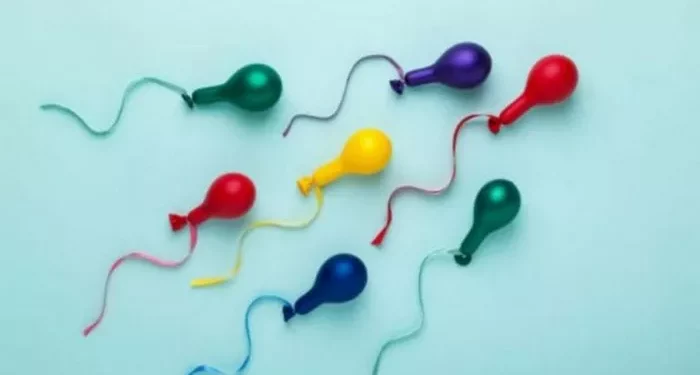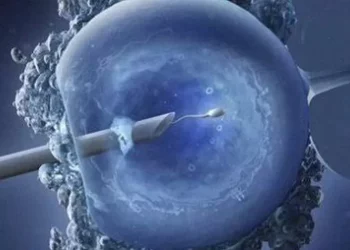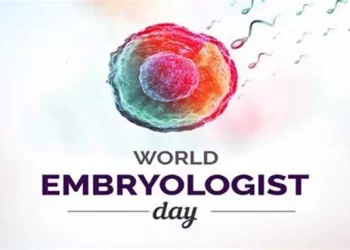Azoospermia, a medical condition characterized by the complete absence of sperm in the ejaculate, is a significant cause of male infertility. It can be broadly classified into two main types: obstructive azoospermia (OA) and non-obstructive azoospermia (NOA). Obstructive azoospermia occurs when there is a blockage in the male reproductive tract, preventing sperm from being ejaculated. Non-obstructive azoospermia, on the other hand, is due to impaired sperm production or maturation within the testes.
Secondary azoospermia falls under the category of non-obstructive azoospermia and is primarily caused by hormonal imbalances. This condition can emerge after a period of normal sperm production and fertility, distinguishing it from primary azoospermia, which is typically present from a young age.
I. Causes of Secondary Azoospermia
Secondary azoospermia can be attributed to a variety of factors that disrupt the intricate hormonal and physiological processes involved in sperm production. These factors can be broadly categorized into pretesticular and testicular causes.
Pretesticular Causes (Hormonal Imbalances)
Hormonal imbalances, particularly those affecting the hypothalamic-pituitary-gonadal (HPG) axis, are a major cause of secondary azoospermia. The HPG axis is crucial for the regulation of testosterone production and spermatogenesis. Any disruption in this axis can lead to hypogonadotropic hypogonadism (HGG), a condition characterized by low levels of gonadotropins (LH and FSH) and testosterone.
Hypogonadotropic Hypogonadism (HGG)
HGG is a condition where the testes are not adequately stimulated to produce sperm due to insufficient gonadotropin release from the pituitary gland. This can be a result of various underlying issues:
Pituitary Disorders: Tumors, infections, or trauma affecting the pituitary gland can impair its ability to secrete LH and FSH, leading to reduced testosterone levels and sperm production. Medications: Certain medications, such as anabolic steroids, opioids, and some psychiatric drugs, can interfere with the normal functioning of the HPG axis, resulting in decreased testosterone levels. Systemic Diseases: Chronic illnesses like diabetes, obesity, and thyroid disorders can also affect hormone levels and contribute to secondary azoospermia.
Low Testosterone
Testosterone is a critical hormone for male reproductive health. Insufficient levels of testosterone can hinder spermatogenesis, leading to secondary azoospermia. Factors contributing to low testosterone include aging, chronic stress, and lifestyle factors such as poor diet, lack of exercise, and substance abuse.
Testicular Causes (Issues Within the Testes)
Several conditions directly affecting the testes can lead to secondary azoospermia:
Mumps Orchitis: This viral infection, typically contracted during childhood, can cause inflammation of the testes. In severe cases, it can lead to testicular atrophy and impaired sperm production. Varicocele: A varicocele is an enlargement of the veins within the scrotum that can disrupt normal testicular function. It is one of the most common reversible causes of male infertility and can contribute to secondary azoospermia by increasing testicular temperature and affecting sperm production. Genetic Conditions: Genetic abnormalities, such as Klinefelter syndrome (47,XXY karyotype), can cause testicular failure and result in secondary azoospermia. Men with Klinefelter syndrome often have small testes and reduced levels of testosterone, leading to impaired spermatogenesis.
See also: The Best Azoospermia Treatment in the World in 2024
II. Diagnosis of Secondary Azoospermia
Diagnosing secondary azoospermia involves a comprehensive evaluation to determine the underlying cause. The diagnostic process typically includes:
Semen Analysis
The first step in diagnosing azoospermia is a semen analysis, which confirms the absence of sperm in the ejaculate. This test is usually performed on multiple samples to rule out temporary conditions affecting sperm production.
Hormone Level Testing
Measuring hormone levels is crucial in identifying hormonal imbalances that may be contributing to secondary azoospermia. Key hormones tested include follicle-stimulating hormone (FSH), luteinizing hormone (LH), and testosterone. Elevated FSH levels can indicate primary testicular failure, while low levels of LH and FSH suggest hypogonadotropic hypogonadism.
Physical Examination
A thorough physical examination can provide valuable insights into potential causes of secondary azoospermia. The examination includes an assessment of the testes for size, consistency, and the presence of any abnormalities such as varicocele. The physician may also evaluate secondary sexual characteristics, which can be affected by hormonal imbalances.
Testicular Biopsy
In certain cases, a testicular biopsy may be performed to obtain tissue samples for microscopic examination. This procedure can help distinguish between obstructive and non-obstructive azoospermia and assess the presence of spermatogenesis within the testes. A biopsy is typically reserved for severe cases where other diagnostic methods have not provided conclusive results.
III. Treatment Options for Secondary Azoospermia
The treatment of secondary azoospermia focuses on addressing the underlying cause and restoring normal sperm production whenever possible. Treatment options include:
Hormonal Replacement Therapy (Testosterone)
For men with low testosterone levels, hormone replacement therapy (HRT) can help restore normal hormone levels and improve spermatogenesis. This therapy involves the administration of testosterone through various forms such as injections, gels, or patches. It is important to monitor hormone levels regularly to ensure optimal treatment outcomes.
Medications to Improve Sperm Production
In cases of hypogonadotropic hypogonadism, medications such as human chorionic gonadotropin (hCG) and recombinant FSH can be used to stimulate the testes and promote sperm production. Clomiphene citrate, an oral medication, may also be prescribed to increase the release of gonadotropins from the pituitary gland.
Surgery
Surgical interventions may be necessary to correct anatomical abnormalities that contribute to secondary azoospermia. One common procedure is varicocelectomy, which involves the surgical removal of varicoceles to improve testicular function and enhance sperm production. This procedure has shown promising results in men with varicocele-related infertility.
See also: 7 Causes of Azoospermia
Sperm Retrieval Techniques
For men who are unable to produce sperm despite medical or surgical interventions, sperm retrieval techniques can be utilized to obtain viable sperm directly from the testes or epididymis. These techniques include:
MESA (Microsurgical Epididymal Sperm Aspiration): This procedure involves the use of a microscope to aspirate sperm from the epididymis, where sperm are stored and mature. It is typically performed in men with obstructive azoospermia. TESE (Testicular Sperm Extraction): In this technique, a small incision is made in the testicle to extract sperm directly from the seminiferous tubules. TESE is often used in cases of non-obstructive azoospermia when sperm production is severely impaired.
Assisted Reproductive Techniques (ART) Using Retrieved Sperm
Once viable sperm are obtained through retrieval techniques, assisted reproductive technologies (ART) can be employed to achieve pregnancy. Common ART methods include:
In Vitro Fertilization (IVF): This involves fertilizing an egg with sperm outside the body in a laboratory setting. The resulting embryos are then transferred to the woman’s uterus for implantation and pregnancy. Intracytoplasmic Sperm Injection (ICSI): A specialized form of IVF where a single sperm is injected directly into an egg to facilitate fertilization. ICSI is particularly useful for men with severe male factor infertility, including those with secondary azoospermia.
IV. Conclusion
Living with secondary azoospermia can be challenging, but it is important to remember that many treatment options are available to address the underlying causes and improve fertility outcomes. Seeking professional help for diagnosis and treatment is crucial for managing this condition effectively.
Emotional support and guidance from healthcare professionals, as well as from support groups and counseling services, can play a vital role in coping with the emotional and psychological aspects of infertility. Advances in medical science and assisted reproductive technologies offer hope to many men with secondary azoospermia, enabling them to achieve their dreams of fatherhood.
In conclusion, secondary azoospermia is a condition that requires comprehensive evaluation and personalized treatment strategies. By addressing hormonal imbalances, testicular issues, and utilizing advanced reproductive techniques, many men with secondary azoospermia can overcome infertility challenges and experience the joys of parenthood.
Related Topics:
What is Asthenozoospermia: A Comprehensive Guide for You



























